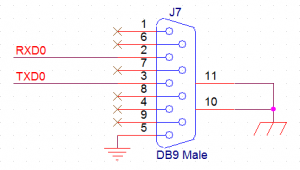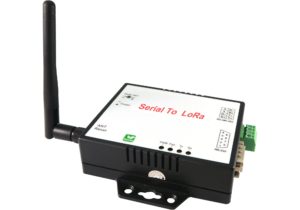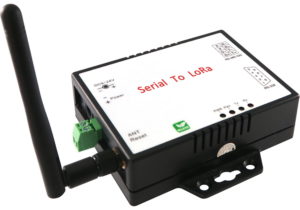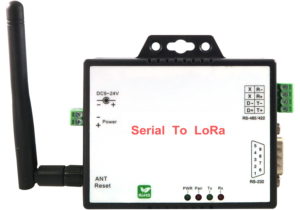LR200S
1 x RS232/422/485
Wireless data transmission through LoRa can be used in a variety of applications, such as Modbus TCP to Modbus RTU, Modbus TCP to Modbus TCP, Modbus RTU to Modbus RTU, Ethernet to Ethernet pass-through, serial to serial pass-through, Modbus digital input/output and Modbus analog input/output.
Read data from Modbus devices, RS485 devices, TCP/IP devices, digital inputs and analog inputs wirelessly over long distances via LoRa.
Send data/commands to Modbus devices, RS485 devices, TCP/IP devices, digital outputs and analog outputs wirelessly over long distances via LoRa.
LoRa is an ideal wireless solution for transmitting data of which the data packet is less than 150 bytes (the less the better) up to 800 meters in a free open area. The transmission distance can be further with the use of outdoor high gain antennas.
LR200 converters with the same frequency and encryption key will be grouped into the same LoRa network when they are powered on. Unlike transmission over Ethernet which is full duplex, devices connected to the same LoRa network work exactly like connecting to half duplex RS485 but over wireless (LoRa). In the same LoRa network, only one master can broadcasts (sends query) to all other slaves (devices). When the master sends out a query, all other slaves (devices) will receive this query, only the device with the corresponding ID will reply, all other devices not with the corresponding ID will ignore this query.
Limitation of LoRa
Data loss will occur with transmission over LoRa. This is because each data packet will be sent ONLY ONCE which means a certain data packet will be lost if it fails to be received by the other end.
Data transmission speed over LoRa is only 100 bytes ~ 120 bytes per second.
For Ethernet-to-Ethernet passthrough over LoRa (LR200E to LR200E), and Serial-to-Serial passthrough over LoRa (LR200S to LR200S), only one end can send data to the other end at the same time. Data will get messy if both ends send data to the other end at the same time.
LoRaWAN and the 3rd party LoRa devices are not supported by LR200 LoRa converters.
How much data loss will occur transmitting over LoRa ?
Actual field testing is the only way to find out how much data loss will occur. Because it depends on data packet size, distance, and interference, unexpected factor,.. etc.
How to reduce data loss ? How to increase transmission distance ?
Data packet less than 150 Bytes or the less the better
Distance less than 800 meters (2600 ft) or the shorter the better
Mount the antennas at a higher position. As less as possible of obstructions and interference factors in the straight path between the antennas at both ends. The obstructions and interference factors are such as walls, electrical noise, etc.
Use a high gain omni antenna on one end, and a high gain directional panel antenna on the other end. Make sure the directional panel antenna is pointing precisely to the other end’s antenna.
Can LoRa transmission pass through the concrete floors and walls ?
LR200 LoRa converters testing result shows it is able to pass through 10 concrete 30-cm thick floors. However actual testing in the actual operating environment is required to find out the actual performance.
If one LR200 connected device broadcasts and all other LR200 connected devices on the same LoRa network receive that broadcast, will it cause confusion?
The user’s application must be able to identify which device is being called by the ID number, just like Modbus application each device must have an ID number, so only the device with the correct ID number will respond.
How many units of LR200S can work with one LR200E / LR200EM in the same LoRa network ?
RS485 over LoRa operates like a half duplex RS485. One response for one quiry. A maximum of 6 to 10 units of LR200S is recommended to operate with one LR200E / LR200EM in the same LoRa network.
How many Modbus RTU devices can be parallel connected to one LR200S ?
A maximum of 6 to 10 Modbus RTU devices are recommended to be parallel connected to one LR200S.
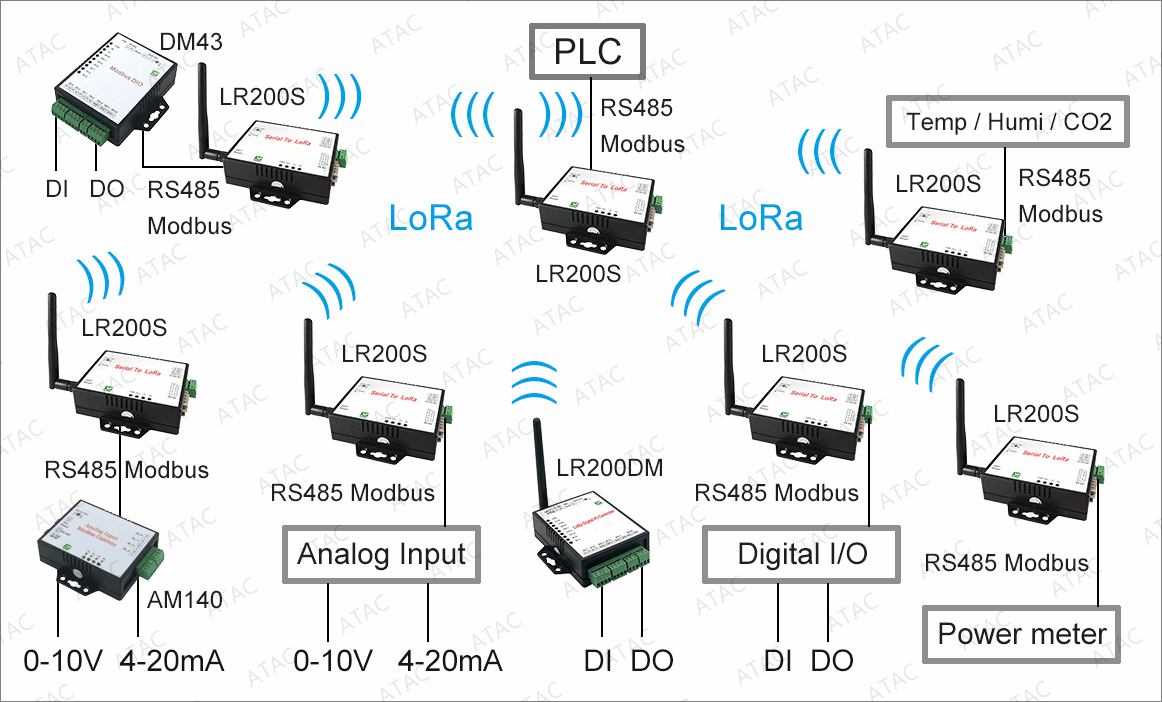
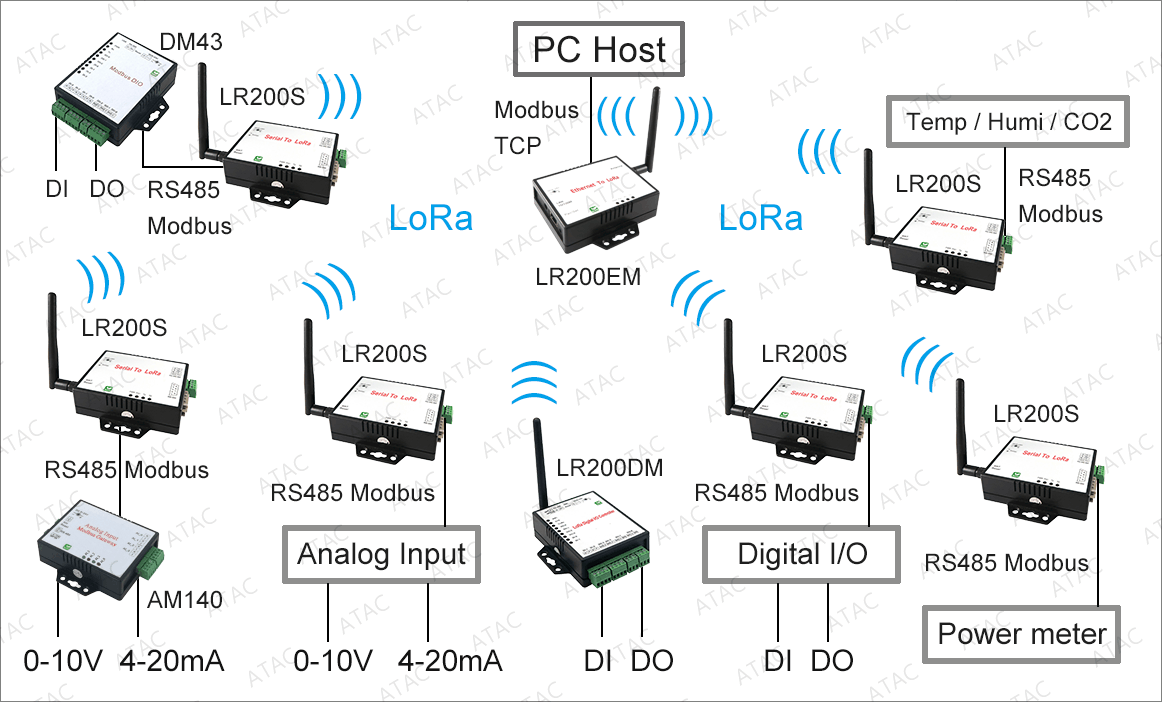
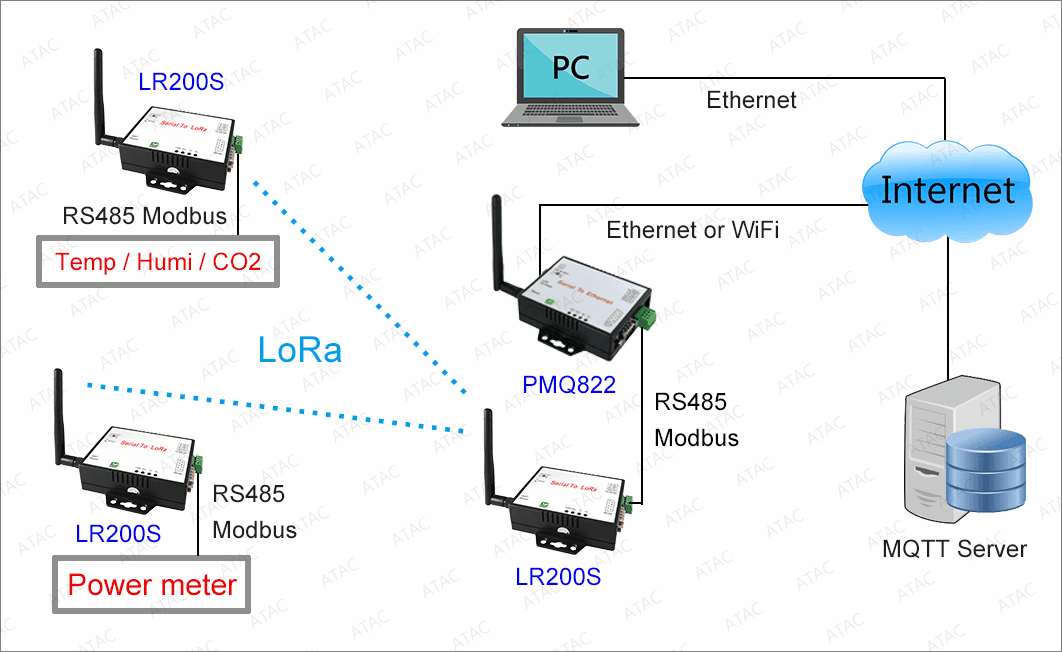
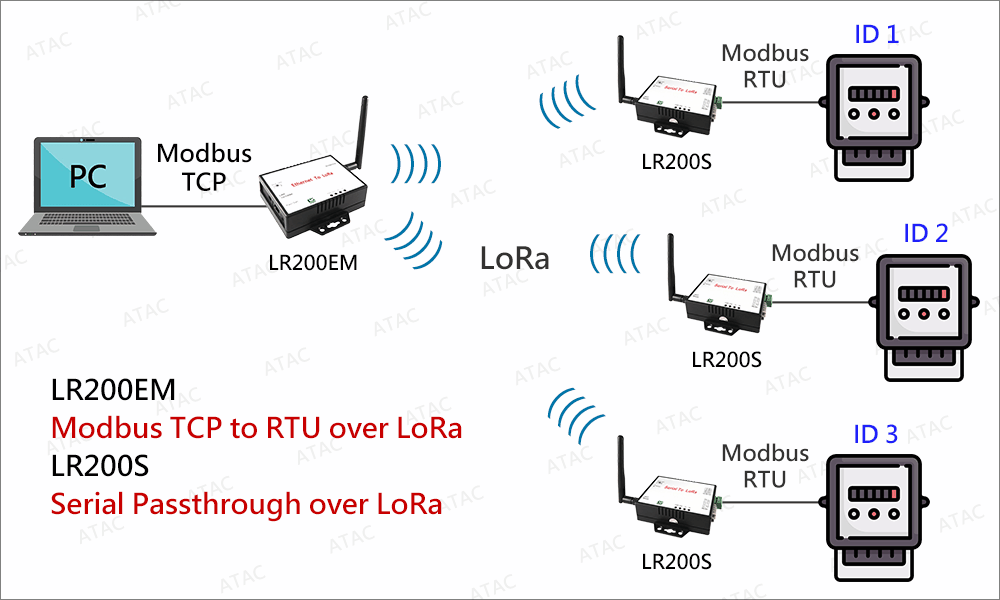

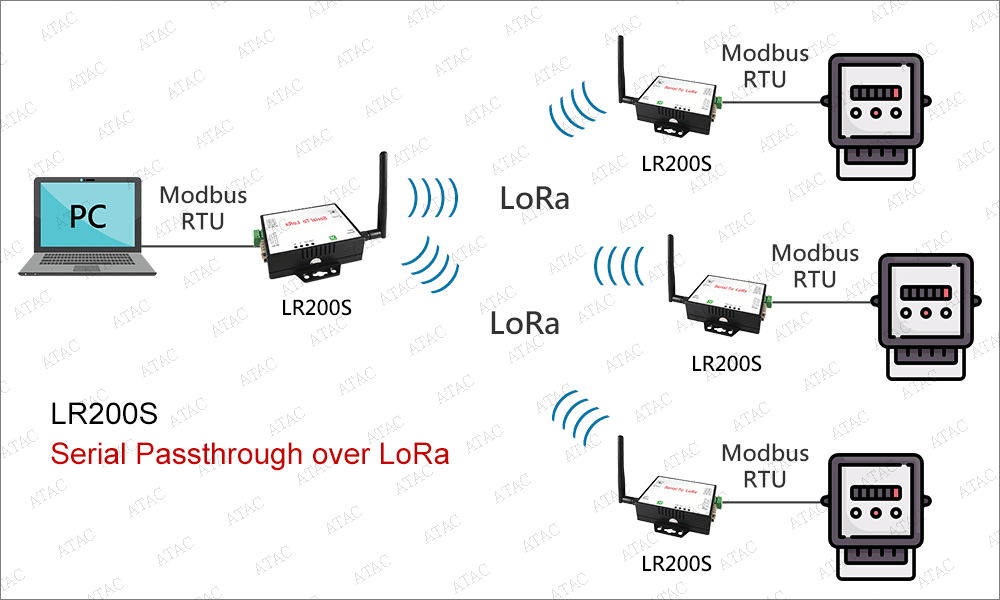



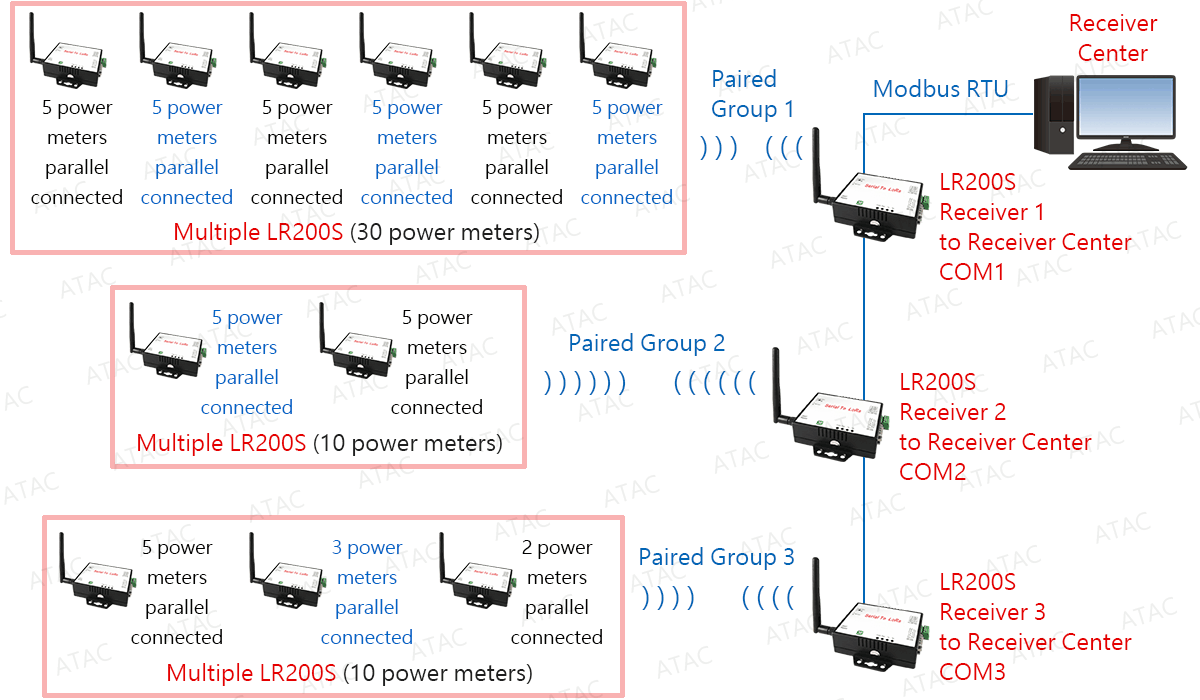
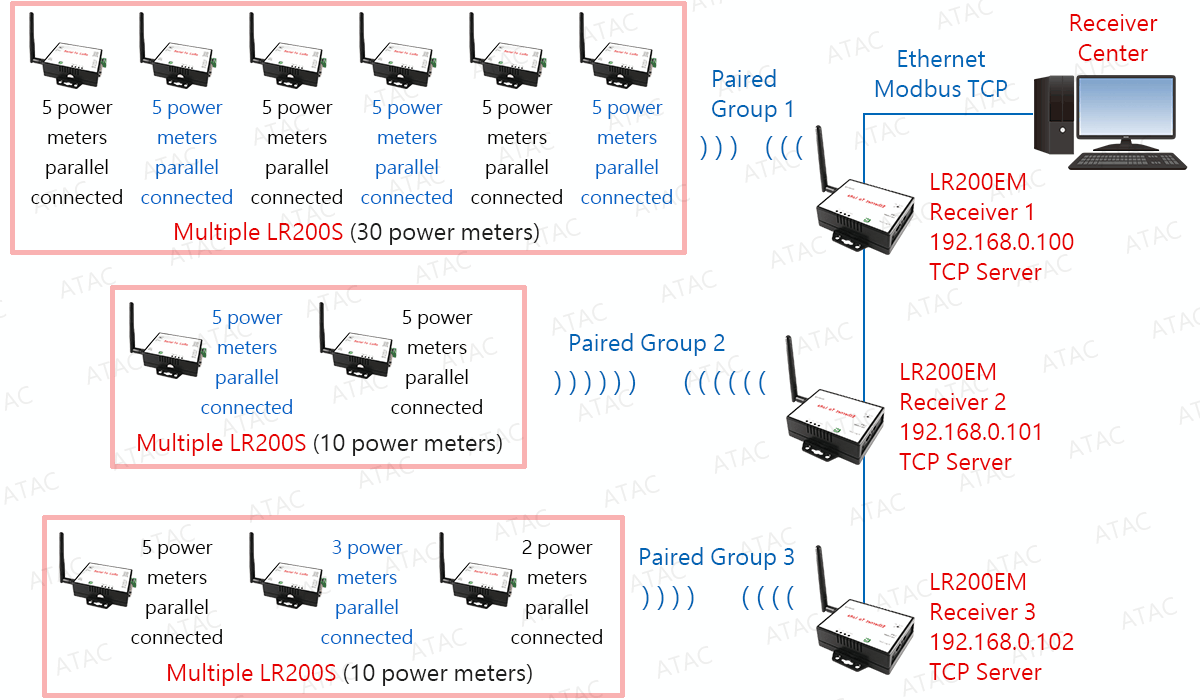
LoRa Network Setup
Each LR200 LoRa converter consists of one main board and one LoRa board
| Model | Description | Main board | LoRa board |
| LR200EM | Modbus TCP to RTU over LoRa | Ethernet to UART | UART to LoRa |
| LR200E | Ethernet to LoRa | Ethernet to UART | UART to LoRa |
| LR200S | Serial to LoRa | RS232/485/422 to UART | UART to LoRa |
| LR200U | Serial (USB VCOM) to LoRa | USB to UART | UART to LoRa |
| LR200DM | Modbus RTU DIO over LoRa | Digital I/O | UART (RTU) to LoRa |
Both LoRa board and Ethernet board contain serial parameter settings such as 9600/N/8/1. These serial parameter settings of both boards must be the same so both boards can communicate with each other.
The LoRa board must be installed on the LR200S main board and connected to the computer via RS232 or RS485. Then run the LoRa setup program to set up the LoRa board. Refer to document for details of LoRa board setup.
Log in to the LoRa converter via the browser webpage to configure the Ethernet board.
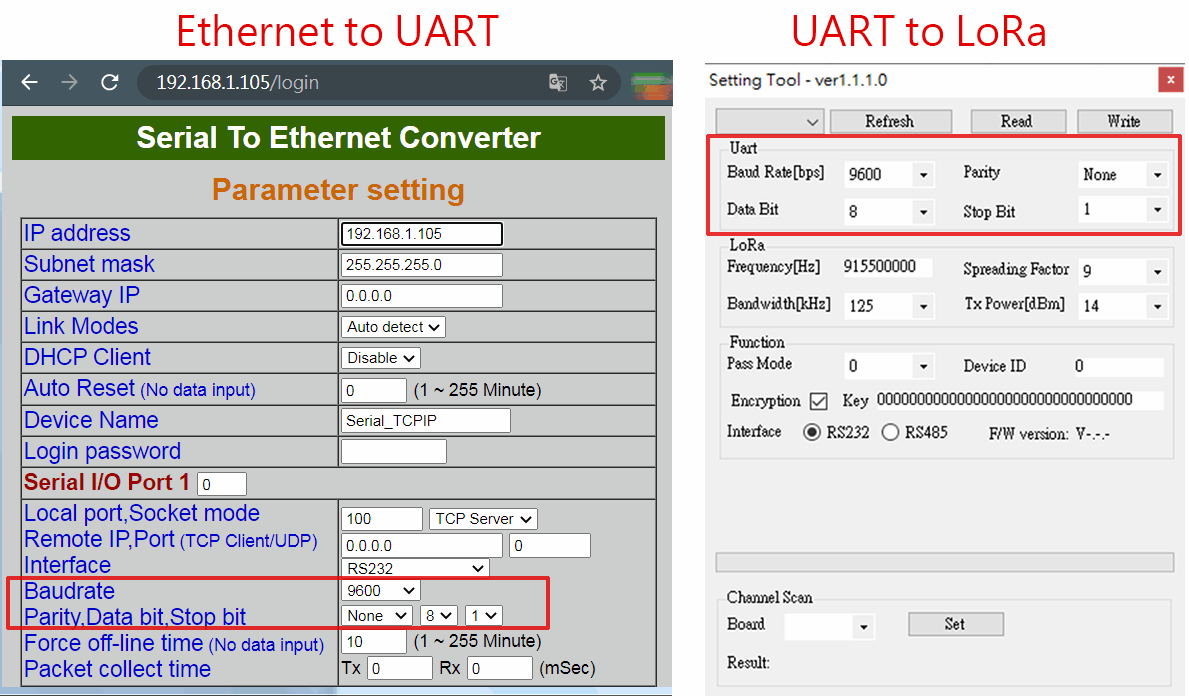
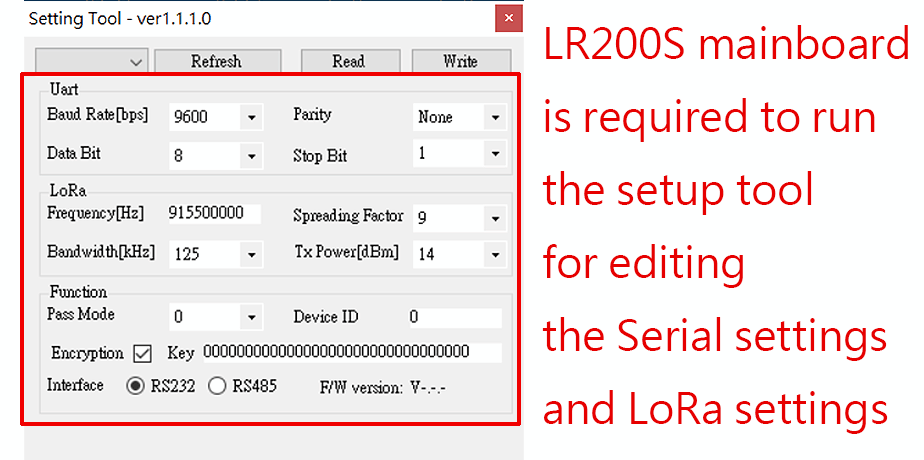
LoRa Network Grouping
LR200 LoRa converters with the same frequency and encryption key will be grouped as the same LoRa network when they are powered on.
LoRa works like a wireless half duplex RS485. Only one master can broadcast to other slaves in the same LoRa network, and the slave with the corresponding ID will respond to the broadcasing.
The frequency between any two different LoRa networks must differ by at least 0.5 MHz to avoid interference with each other. Assume there are 3 different LoRa networks, each LoRa network frequency can be, for example, 915.5 MHz, 916 MHz, and 916.5 MHz.
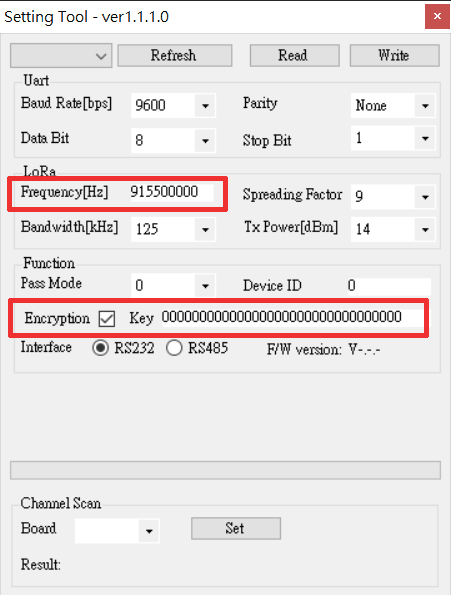
LoRa Data Rate Configuration
Three parameters can be adjusted: TX power, bandwidth and spreading factor. If you lower the TX power, you’ll save battery, but the range of the signal will obviously be shorter. The other two parameters combined form the data rate. This determines how fast bytes are transmitted. If you increase the data rate (make the bandwidth wider or the spreading factor lower) you can transmit those bytes in a shorter time. For those, the calculation is approximately as follows: Making the bandwidth 2x wider (from BW125 to BW250) allows you to send 2x more bytes in the same time. Making the spreading factor 1 step lower (from SF10 to SF9) allows you to send 2x more bytes in the same time. Lowering the spreading factor makes it more difficult for the gateway to receive a transmission, as it will be more sensitive to noise. You could compare this to two people taking in a noisy place (a bar for example). If you’re far from each other, you have to talk slow (SF10), but if you’re close, you can talk faster (SF7)
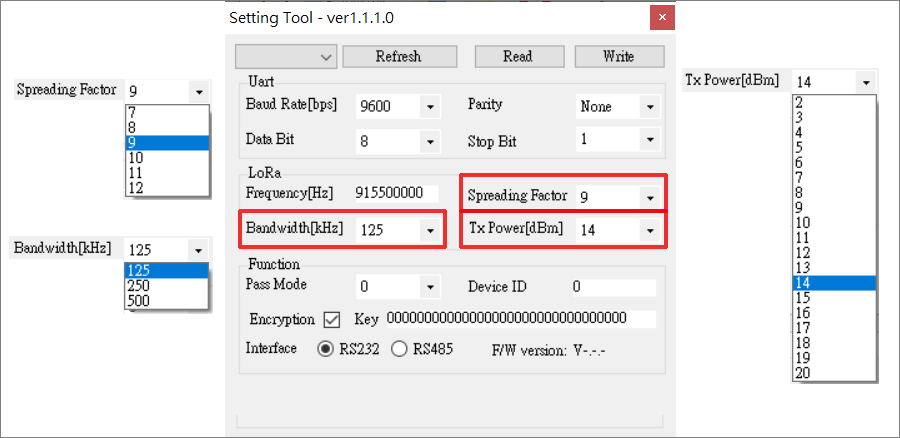
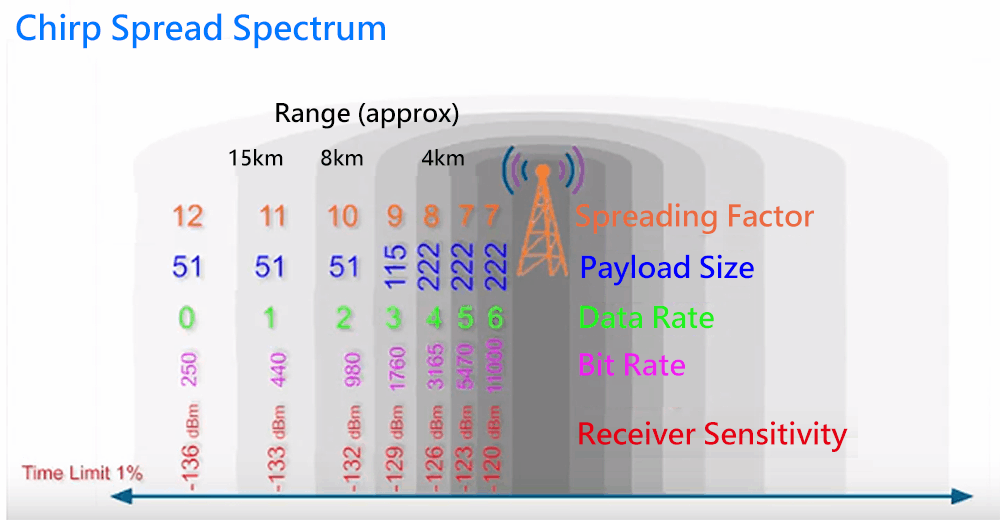
Above Spread Spectrum is for reference only
LoRa transmission distance can be extended using high gain panel & omni antennas
| Antenna type in one end | Antenna type in the other end | Transmission distance in free open space | Remark |
| 2 dBi standard | 2 dBi standard | Up to 800 meters | |
| 3 dBi omni antenna | 3 dBi omni antenna | Up to 1.5 km (1,500 meters) | |
| 3 dBi omni antenna | 6 dBi panel antenna | Up to 2.5 km (2,500 meters) |

DO NOT support LoRaWAN
Unable to communicate with the third party LoRa device
| CPU | 32 bits MCU ,40 MHz , 16KB SRAM, 128KB Flash ROM |
| LoRa | Semtech SX1272 Frequency : ISM band 862 ~ 936MHz Receiver Sensitivity : -137 dBm Transmit Output Power : 20 dBm Sleep Current : 3uA (at power down state) TX current < 140 mA@20 dbm , RX current < 10 mA Security processor ( 128/192/256 bits AES ) Packet engine up to 256 bytes with CRC Antenna : SMA Type , 2 dBi , changeable Distance : Up to 800 meters in free open space Data Rate : 9600 or 19200 bps (between LoRa converter and the equipment connects to it) Application mode : Star |
| Setup Tool | Windows Utility |
| Power supply | DC 9 ~ 24V / 150ma @ 9V , 60ma @ 24V |
| LED Indicator | SYS (green) , Rx(red) , Tx(green) |
| Operating Temperature | -10 °C ~ 70 °C |
| Storage Temperature | -20 °C ~ 80 °C |
| Dimension | 100 x 90 x 25 mm ( W x D x H ) |
| Weight | 150 g ( not include power ) |
| Serial | 1 x RS-232/422/485 ( Auto Detect ) RS232 : Rx , Tx , GND ( DB9 Male ) RS422 : Tx+ , Tx-, Rx+ , Rx- (Surge Protect ) RS485 : Data+ , Data- (Surge Protect) Built-in RS-422/RS-485 Terminal Resistor Speed : 9600 bps〜115.2K bps Parity : None , Odd , Even Data Bit : 7, 8 / Stop Bit : 1 , 2 |
